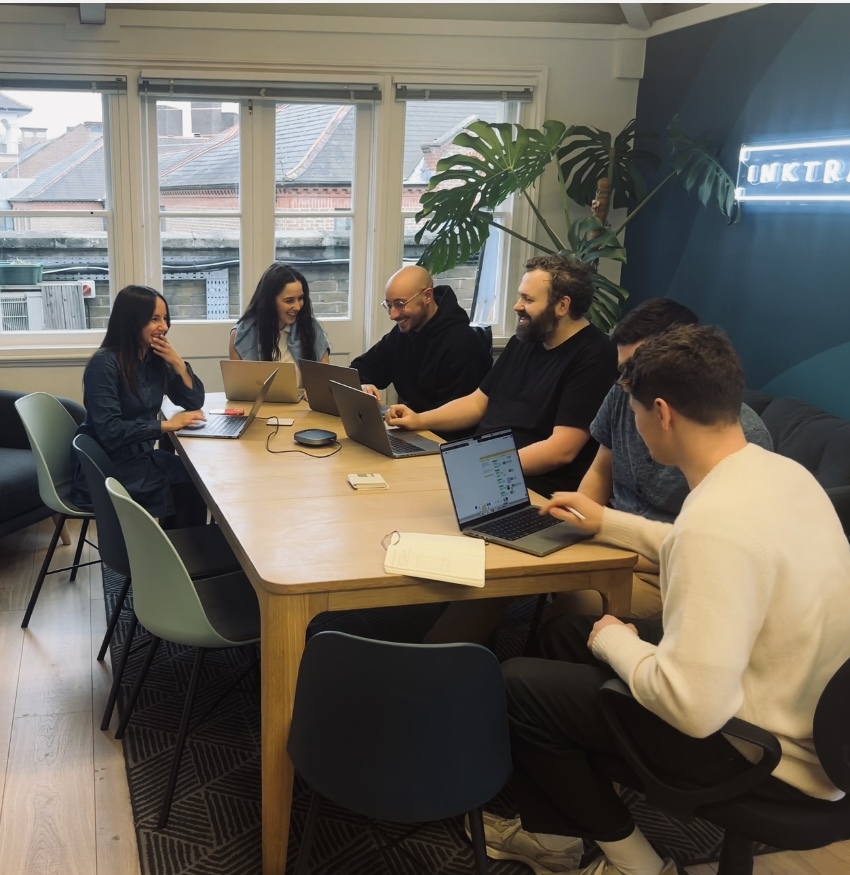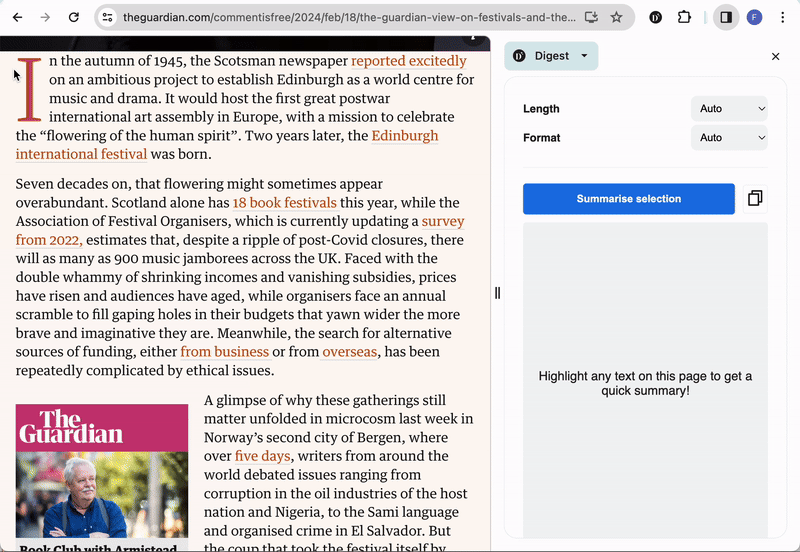How we designed our AI summariser, Ink Digest
Generative AI has rapidly ascended to prominence, captivating most industries in the past few years. Its influence on Product Design is particularly notable, with a surge of generative AI design tools appearing at an astonishing pace. These pose numerous questions about how we approach our roles as designers and developers. Both from ethical perspectives around copyright, data security and misinformation, to evaluating which of our skills can be optimised and which should be updated or even discarded.
Existential concerns aside, at Inktrap we believe in adapting and staying curious, whilst critically evaluating new technologies to ensure they provide real value. We’ve started designing for generative AI in some of our client projects; one example being a collaboration with a legal firm on a Retrieval-Augmented Generation (RAG) powered chatbot. This tool lets users easily navigate and understand the firm's proprietary documents, making the site's rich information more accessible. This collaborative project is a prime example of how AI can be used to demystify complex information and improve user engagement in the legal sector.
Alongside our client work, we frequently run small internal projects for the team to experiment with new software or strengthen existing skills. You can check some of our previous internal projects here on our Labs page. We like to learn by doing, so to enhance our AI skills, we set ourselves a goal to create our very own generative AI product. Our product had to be an achievable, small-scale experiment and add real value to users, rather than just being AI for the sake of AI ✨.
Through a series of small brainstorming sessions and an all-hands-on-deck discovery workshop, we scoped out an achievable and valuable product to work on. One of our developers, George, had identified that searching for content online can drastically slow down your workflow. What if we had a Chrome extension that summarised any text you highlighted on a website? No more hours spent skim-reading large pieces of text or jumping between tabs to use external products like ChatGPT. Just highlight, click and receive your neat little summary right there in your tab.

Whilst our concept seemed straightforward, we still needed to understand which Large Language Model (LLM) would be best suited for our summarising tool. One option would be to use a generic LLM like Gemini or Chat GPT, which can generate content across various domains. However, we knew that a fine-tuned model would be more likely to deliver better quality and accurate results with a faster response time. Fine-tuned models are, essentially, generic LLMs which have been trained on smaller, specific datasets to refine their capabilities and improve performance in a particular task or domain. Using an existing fine-tuned model would mean we wouldn’t have to teach a generic LLM how to perform consistent summarisation tasks as it would already understand how to.
For this reason we chose Cohere Summarise, an LLM which is customised specifically for summarisation. It can work with lengthy documents up to 50,000 characters, which is equivalent to 18-20 pages in a single-spaced format. This goes beyond the length of most LLMs.
Designing the UI for our summariser Chrome extension, now named Ink Digest, was a separate task focused on making the product experience as intuitive and seamless as possible. Our aim was to improve a user’s workflow by reducing the amount of time it takes them to extract the content they need. We explored several approaches for how the plugin could co-exist in a browser – from widgets to hover states until eventually we settled with a collapsable sidebar. Rapid prototyping helped us to discover usability issues with our alternative ideas, highlighting that a consistent space within the interface, which does not obstruct the webpage’s original content was the most user-friendly solution.

We completed the entire project from definition through to design and development, in just under five days. Our strategy focused on maintaining simplicity and clarity, keeping in mind that this initial version would serve as the foundation for future iterations and improvements. We included valuable features such as formatting and length options for the user to choose from, alongside light and dark modes and a quick copy button for your summary. We plan to observe how the product evolves to refine it accordingly for any additional V2 features.
Blending our Product Design expertise with new technology was an exciting venture for the whole team to get stuck into. Ultimately, we believe in being pragmatic about AI. When working with clients our first step is always to understand the problem they're trying to solve. Then we evaluate if AI is the right tool for the job. Just like with Ink Digest, when AI fits, we’ll use it to craft innovative yet practical solutions. If not, we find the best non-AI approach. Our goal is to add real value to a product.
Ready to explore how AI can enhance your product—or find the right solution for your needs? Let's talk.
Let's get started

Chat with James
Book a free discovery call with our co-founder to see if we’re a good match for your requirements.
